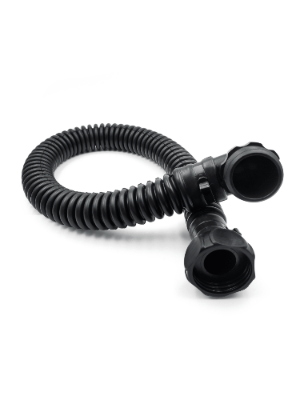Top 10 Situations Where a Gas Mask with Hose is Essential
Safety equipment has gone from a "nice to have" to a "must have" in a world that feels more chaotic. One of the most critical pieces of protective equipment is the Gas Mask with Hose, especially in an environment that is contaminated. While traditional gas masks offer significant protection, a gas mask equipped with a hose takes safety and comfort to the next level. The hose provides the option to draw conditioned, unusable air from another location, which reduces exposure to potentially harmful airborne toxins, smoke, pathogens, etc.
The flexibility to wear the gas mask for extended periods and safety in movement in hazardous environments and exit areas often comes with using it with a hose for air, depending on particular hazards. Knowing where and when the gear is necessary is not being smart, it is saving your life. This blog will review 10 distinct situations where a gas mask with a hose is not only recommended, but it is essential.
Chemical Spill Responses
Chemical plants and industrial facilities are at risk of accidental leaks or spills. In these situations, airborne toxins may cause immediate harm to people. A gas mask with a hose enables workers or responders to protect themselves by drawing cleaner air from unsealed areas or an external filter system. The distance, made possible by the hose, keeps the individuals in a safer position and helps responders contain the spill.
Fire Fighting in Hazardous Environments
While firefighters utilize SCBA systems regularly, there are instances when a gas mask with a hose is a more compact option in a lower intensity situation or haze conditions. The hose allows for connection to an external air source, which reduces exposure to harmful smoke, soot, and chemical residue in burned buildings or structures. This is also advantageous in the event of an industrial or chemical fire, where toxic fumes can linger, even if the flames are out of sight.
Riot Control and Protest Zones
While standard gas masks offer protection, a hose attachment enhances airflow and usability over longer periods, especially in enclosed or heavily affected areas. Law enforcement, journalists, and even peaceful protesters benefit from this added level of respiratory safety.
Military Operations and Training
Soldiers often operate in environments where chemical, biological, radiological, and nuclear (CBRN) threats are real. A gas mask with a hose is part of standard issue gear in such operations. The hose allows connection to external filters or clean-air packs, which can be carried in protected zones or vehicles. In training exercises, it also reduces fatigue by improving airflow.
Asbestos and Mold Abatement
In situations where asbestos or mold is present in buildings, the possibility of airborne particles negatively impacting the respiratory system is very likely. A hose-supported gas mask that draws air from a filtered source above the contaminated site can reduce health risk. Some professionals in home restoration, demolition, and renovation may use this configuration as a barrier for safe remediation.
Underground Tunneling and Confined Spaces
The risk involved in working in a confined underground space such as a sewer system or a mine involves the risk of gas build-up or the absence of oxygen. A gas mask with hose capabilities can offer an additional level of protection by connecting to an above-ground air filter or filter, thus providing safe air for the workers breathing regardless of the build-up below them. It is a safety tool they cannot work without in the past and present.
Pandemic or Biohazard Exposure
In the event of a pandemic or biohazard threat, healthcare workers and first responders need reliable PPE to avoid airborne transmission. A gas mask with a hose adds an extra layer of filtration and comfort, especially during long shifts in contaminated zones. Drawing air from safer zones or HEPA-filtered sources increases overall protection against pathogens.
Post-Nuclear Fallout or Radiological Events
In extreme scenarios such as a nuclear accident or attack, radioactive particles can contaminate the air. A standard gas mask might not suffice for extended use in such high-risk environments. A hose system allows users to remain in gear longer by improving breathability and linking to high-grade external filters capable of trapping radioactive dust and isotopes.
Agricultural Fumigation
Agricultural workers who are utilizing pesticides and fumigating chemicals while treating large areas will likely require respiratory protection. A simple gas mask with a hose allows the operator to fumigate or apply pesticides without inhaling harmful chemicals, particularly in enclosed spaces like greenhouses and silos. It also reduces the discomfort that is often associated with wearing full PPE in the sunlight for multiple hours.

DIY or Home Emergency Kits
For preppers and home safety planners, adding a gas mask with a hose to an emergency kit is a step in the right direction. Whether it's a chemical leak in your neighbourhood, a wildfire, or some other biological threat, to know you have that capability helps with peace of mind. Being able to connect to a safer air supply or external filter means that in cases of home shelters or bunkers, this gas mask with a hose can do the trick!
Final Thoughts
In an age where natural disasters, industrial hazards, and global unrest can strike without warning, being equipped with the right protective gear is not optional—it’s essential. A Gas Mask with Hose provides superior comfort, flexibility, and above all, safety in a wide range of life-threatening scenarios. Whether you're a professional responder or simply safeguarding your family, this gear should be part of your essential toolkit. For military-grade, reliable gas masks with hose attachments that meet NATO standards, visit the Supergum Shop. When it comes to your lungs, never compromise on quality.


